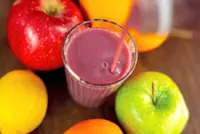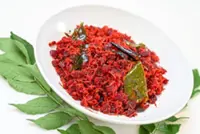Hailed as a superfood, beetroot is steadily finding its place in everyday cooking and health-conscious diets.
Low in calories but rich in phytonutrients, this vibrant root vegetable has surged in popularity for its remarkable health benefits.
According to the Royal Horticultural Society, beetroot is thought to have descended from the wild sea beet, Beta vulgaris which traces its roots to coastal regions stretching from Britain to India.
Sea beets were first domesticated in the eastern Mediterranean and Middle Eastern regions.
Ancient Greeks and Romans were believed to have consumed beet leaves and also used the plant including its roots for medicinal purposes.
Interestingly, back then, beets had a reputation as an aphrodisiac.
According to Greek mythology, beetroot was a favourite of Aphrodite, the goddess of love, who was said to eat it to enhance her beauty.
Today, people around the world enjoy both its bulbous roots and leaves for their flavour, colour and health benefits.
The variety commonly found in Malaysia is the red garden beets.
According to the Produce Pack website, other types of beetroot include golden beets, candy cane (chioggia) beets, avalanche beets, bulls blood beets, cylinder beets, baby beets and sugar beets.
The leaves are called beet greens or beet spinach.
I did not grow up eating beetroot, but in my adult years, I began seeing it tossed into salads, pickled on the side, or cooked with lentils or coconut in Indian restaurants.
The pop of colour it adds to any dish has always caught my eye.
Admittedly, I have grown fond of the beetroot’s earthy sweetness – whether pickled, roasted, tossed into salads, or cooked with either lentils and coconut.
For those unfamiliar with beetroot, cooking with it can seem a little intimidating at first.
But with this simple recipe, you will find it is easier than you think.
Beetroot with coconut
1 beetroot (350g)
1 red onion (150g)
3 cloves garlic
¾ cup coconut shavings
3 tbsp cooking oil
1 cup water
1½ tsp salt
½ tsp turmeric
Tempering
2 dried chillies
1 green chilli
1 sprig curry leaf
2 tsp mustard seeds
2 tsp urad dhal
1 tsp fennel
Directions
Peel and dice a red onion and also finely chop the garlic cloves. Cut the green chilli, lengthwise, into quarters.
Using either a sharp knife or a peeler to remove the skin from the beetroot.
Peeling raw beetroot can be messy, and the fruit is also slippery without its skin on, so be careful when handling it.
Place the beetroot on the chopping board, and cut it into half.
Dice the beetroot into cubes to hasten the cooking process.
Add cooking oil to a pot. Once hot, throw in dried chillies followed by the curry leaves.
The mustard seeds, urad dhal and fennel seeds go in next, in that order.
Note that the mustard seeds will pop as the urad dhal takes on a golden hue.
Introduce the green chilli and cook until it softens.
The diced beetroot are next. Stir to mix with the sauteed ingredients.
Next add ½ tsp turmeric and stir.
Pour in one cup of water, and cover the pot with a lid.
Simmer on medium heat for 20 minutes until the beetroot is cooked.
Test the beetroot cubes with a fork. If the tines of the fork pierces through, the beetroot is ready to be eaten.
Once water has evaporated, add one tsp of salt and mix.
Add the fresh coconut shavings, and stir to evenly distribute the coconut.
Taste for seasoning and if needed, add not more than ½ tsp salt.
Cook for about two more minutes before turning off the heat.
The dish can be savoured with rice and curry, or eaten with some proteins for those on a low-carb diet.






